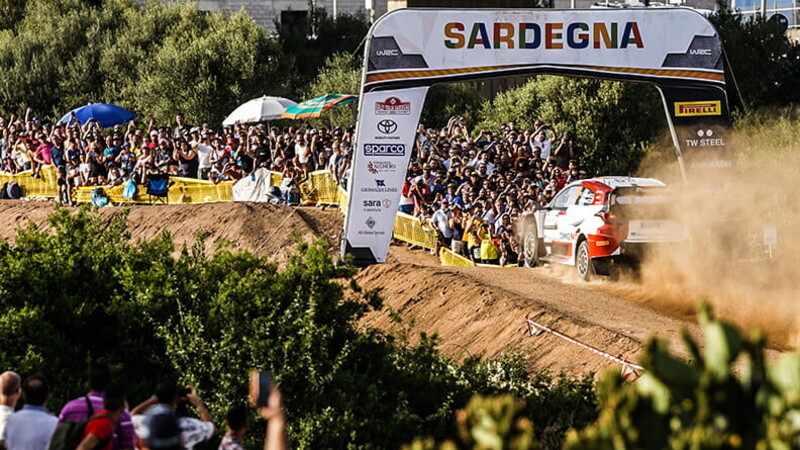WRC Sardinia: why tyres matter

Rough roads and high temperatures combine to make the Sardinian stages some of the toughest tests for a gravel tyre in the World Rally Championship. It's for this reason that Pirelli conducted much of its testing on the island (with Andreas Mikkelsen in a Citroen C3 WRC) before it returned to the series in 2021.
Weather conditions in early summer are usually dry and consistent, which makes the Scorpion KX HA hard compound tyre the main choice – with the soft compound also available to provide more grip in slippery conditions.
Tyre strategy in Sardinia is often complicated by the fact that the first and second passes of stages have to be completed on the same set of tyres, with roads usually becoming rougher and more rutted for the repeat pass as the sandy surface is swept away.
This year, the move to Olbia and closer proximity of the stages means the format for Friday and Saturday is closer to other events, with all the stages run once in the morning before service and a change of tyres prior to the second pass. That could simplify tyre choices, with more consistent conditions across each loop, but also encourage different strategies between the teams and drivers as they try to find an elusive advantage. The north-east of the island should also bring sandier and softer stages – albeit still very rough – potentially changing the considerations of the teams.

RALLY ITALY FOR DUMMIES
The Mediterranean island of Sardinia has been home to Italy's round of the World Rally Championship for almost 20 years, having made its WRC debut in 2004. Previously, it was held on the mainland around Sanremo, predominantly on asphalt roads, so the move to Sardinia presented a very different challenge: rough and rocky stages and some of the highest temperatures of the season, often in excess of 30 degrees centigrade.
Historic towns and pristine beaches provide a beautiful backdrop but offer little clue to the demands that make this one of the toughest rallies of the season for drivers, cars and tyres. The roads are fast but narrow, lined by trees and rocks, leaving little margin for error.
The route often takes the rally across the island, and in recent years the service park has alternated between Alghero on the west coast and Olbia in the east, which this year takes its turn to host the event. This means that Sunday's final leg takes place in the country's northernmost corner close to the popular Costa Smeralda. Before that, on Friday, crews will have to tackle the rally's most famous Monte Lerno stage, which has more than doubled in length this year to nearly 50 kilometres.




